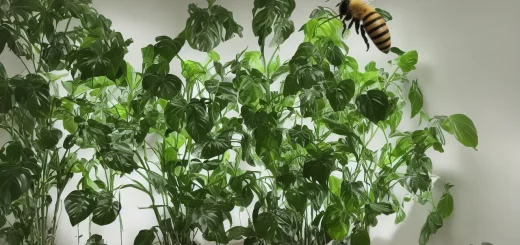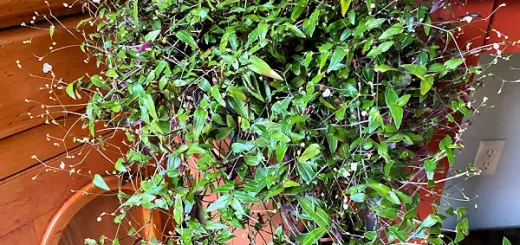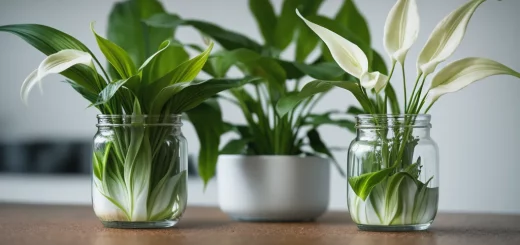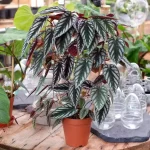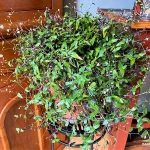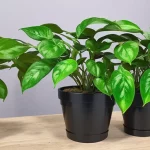The Elegance of Japanese Indoor Plants
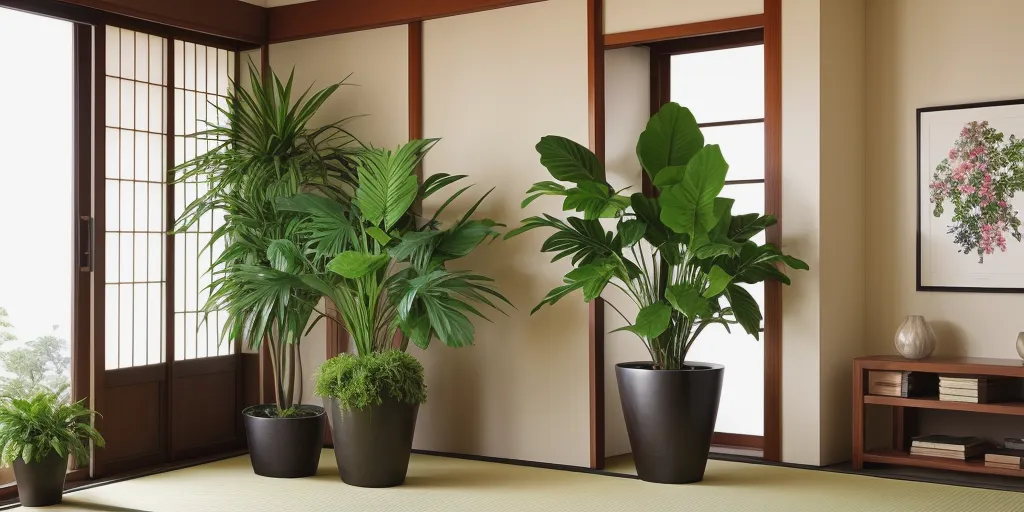
Table of Contents
Introduction to Japanese Indoor Plants:
In the heart of Japanese culture and interior design lies a profound appreciation for nature and its myriad expressions. Plants, in particular, hold a special place, seamlessly weaving into the fabric of Japanese homes, temples, and even their ancient tea ceremonies. This deep-rooted connection goes beyond mere decoration; it’s a reflection of the Japanese philosophy of life, balance, and aesthetics. Japanese indoor plants, with their unique forms and characteristics, not only enhance the beauty of a space but also bring with them a sense of tranquility and harmony. This article delves into the world of these plants, shedding light on their aesthetic appeal and the myriad benefits they offer to those who embrace them.
1. The Essence of Japanese Interior Design:
1.1. Wabi-sabi: Finding Beauty in Imperfection:
Wabi-sabi is a fundamental concept in Japanese aesthetics that celebrates the beauty in imperfection, transience, and the natural cycle of growth and decay. It’s about embracing the cracks, the weathering, and the asymmetry found in nature and life. In the realm of interior design, this philosophy translates to choosing materials, textures, and plants that tell a story, that have character, and that resonate with the soul. It’s not about pristine, flawless decor but about creating spaces that feel lived-in, authentic, and real.
1.2. The Role of Nature in Japanese Homes:
Nature is not just an afterthought in Japanese design; it’s an integral element. Traditional Japanese homes often feature elements like shoji screens that blur the boundaries between the indoors and the outdoors, tatami mats made of natural straw, and central courtyards or gardens that serve as the home’s lungs. Plants play a pivotal role in this design ethos. Whether it’s a meticulously shaped bonsai tree, a vibrant azalea in bloom, or the subtle elegance of a potted fern, plants are strategically placed to bring nature indoors, purify the air, and provide a sense of peace and calm to the inhabitants.
2. Popular Japanese Indoor Plants and Their Significance:
Japanese indoor plants are not just about greenery; they are a blend of art, history, and symbolism. Each plant has its own story, significance, and role in Japanese culture and homes. Let’s explore some of the most cherished ones:
2.1. Bonsai: The Art of Miniature Trees:
Bonsai, which translates to “planted in a container,” is a centuries-old art form that involves cultivating miniature trees that mimic the shape and scale of full-sized trees. More than just a horticultural endeavor, bonsai is a meditative practice that reflects the Japanese appreciation for nature, patience, and aesthetics. Each bonsai tells a story, often representing scenes from nature, like a tree weathered by the wind or an old, gnarled pine on a mountain.
2.2. Kokedama: The Moss Ball Plant:
Kokedama, or “moss ball,” is a unique Japanese planting style where a plant’s roots are encased in a spherical ball of soil and moss. Suspended in air or placed on a platform, kokedama represents the fusion of natural simplicity and elegance. It’s a minimalist’s dream, capturing the essence of the plant without the need for a pot or container.
2.3. Sansevieria (Snake Plant): The Modern Samurai’s Sword:
Sansevieria, commonly known as the Snake Plant, boasts upright, sword-like leaves, reminiscent of a samurai’s blade. This plant is not only aesthetically pleasing but is also revered for its air-purifying qualities. In Japanese culture, its sharp, pointed leaves symbolize protection, making it a popular choice for homes and businesses.
2.4. Ficus Binnendijkii (Long-leafed Fig): A Touch of the Tropics:
The Ficus Binnendijkii, with its long, slender leaves, brings a touch of the tropics to Japanese interiors. It’s a plant that thrives in indirect light, making it perfect for indoor settings. In Japan, the ficus is often associated with endurance and resilience, reflecting its ability to thrive in various conditions.
2.5. Satsuki Azalea: Blooms That Tell a Story:
The Satsuki Azalea is celebrated for its vibrant and diverse blooms. Flowering in late spring, this plant offers a riot of colors, from deep reds to soft pinks and pristine whites. In Japanese culture, the azalea’s blooms are symbolic of patience and passion, as the plant waits all year to showcase its beauty in a brief but intense display.
3. Caring for Japanese Indoor Plants:
Japanese indoor plants, while exuding an aura of simplicity, often require specific care to thrive and maintain their aesthetic appeal. Understanding their needs is essential to ensure they remain healthy and continue to enhance your living space.
3.1. Understanding Light Requirements:
Different Japanese plants have varied light needs. While bonsai trees might require bright, indirect light to maintain their miniature stature, plants like the Sansevieria are more tolerant of low light conditions. It’s essential to research each plant’s specific requirements and adjust their placement in your home accordingly. Remember, too much direct sunlight can scorch the leaves, while too little can stunt growth.
3.2. Watering Practices and Humidity Considerations:
Japanese plants, especially those adapted for indoor environments, generally prefer their soil to be well-draining. Overwatering can lead to root rot, a common issue. It’s best to water when the top inch of the soil feels dry to the touch. Additionally, many Japanese plants, being native to humid environments, thrive in higher humidity. Consider misting the plants or using a humidifier, especially during drier months.
3.3. Soil and Potting Mix Essentials:
The right soil mix can make a significant difference in the health of your plant. Bonsai trees, for instance, require a specific type of soil that allows for excellent drainage. Kokedama would need a mixture of peat moss and bonsai soil to retain moisture while preventing waterlogging. Regularly repotting and refreshing the soil can also help in providing the plants with the nutrients they need.
3.4. Pruning and Shaping for Aesthetic Appeal:
Japanese indoor plants often require regular pruning and shaping, not just for health but also for aesthetic reasons. Bonsai trees, in particular, need meticulous shaping to maintain their miniature form. Regularly trimming dead or overgrown branches and leaves can help the plant direct its energy to new growth and maintain its desired shape.
4. The Spiritual and Mental Benefits of Japanese Indoor Plants:
Beyond their physical beauty, Japanese indoor plants offer a myriad of spiritual and mental benefits, deeply rooted in Japanese culture and philosophy.
4.1. Plants as a Source of Zen and Meditation:
The practice of caring for plants, especially bonsai and kokedama, is often seen as a form of meditation. The meticulous attention to detail, the patience required, and the deep connection with the plant can lead to a state of Zen, promoting mindfulness and presence.
4.2. Improving Air Quality and Well-being:
Many Japanese indoor plants, like the Sansevieria, are known to purify the air by removing toxins. Cleaner air can lead to better respiratory health, improved sleep, and an overall sense of well-being.
4.3. The Therapeutic Art of Plant Care and Bonsai Shaping:
Engaging with plants, nurturing them, and watching them grow can be incredibly therapeutic. The art of bonsai shaping, in particular, requires patience, focus, and creativity, offering a unique form of artistic expression. It’s a practice that can reduce stress, enhance mood, and provide a deep sense of accomplishment.
5. Incorporating Japanese Indoor Plants into Modern Homes:
The elegance and tranquility of Japanese indoor plants make them a perfect fit for contemporary homes. Whether you’re looking to infuse a touch of Japanese aesthetics into your space or create a full-blown Zen sanctuary, here’s how you can seamlessly integrate these plants:
5.1. Creating a Japanese-Inspired Corner or Room:
Designating a specific area or room for your Japanese plants can create a serene retreat within your home. Consider adding elements like tatami mats, shoji screens, or a small water feature. The gentle sound of trickling water, combined with the greenery, can transform the space into a peaceful haven. Incorporate plants of varying heights and forms to create depth and interest.
5.2. Pairing with Minimalist Furniture and Decor:
Japanese design often leans towards minimalism, emphasizing clean lines and functional pieces. When incorporating Japanese plants into modern homes, consider pairing them with minimalist furniture. A simple wooden bench, a low-profile coffee table, or neutral-colored cushions can complement the plants without overshadowing them. Remember, the goal is to create a harmonious balance between nature and man-made elements.
5.3. Using Plants as Natural Room Dividers and Focal Points:
In open-plan homes or larger rooms, Japanese plants can serve as natural dividers. Tall plants like the Sansevieria or a well-pruned bonsai on a pedestal can demarcate spaces without the need for walls or screens. Additionally, placing a plant like the Satsuki Azalea, with its vibrant blooms, in a central location can make it a stunning focal point, drawing the eye and anchoring the room.
Conclusion:
As we journey through the world of Japanese indoor plants, it becomes evident that they are more than just decorative elements. They are carriers of a rich cultural tapestry, blending art, nature, and philosophy. The timeless beauty of these plants, from the intricate forms of bonsai to the vibrant blooms of azaleas, brings a sense of serenity and balance to any space. By incorporating them into our modern homes, we don’t just enhance the aesthetics; we invite a piece of Japanese heritage, a harmonious blend of nature, art, and culture. Whether you’re a seasoned plant enthusiast or a beginner, the world of Japanese indoor plants offers a realm of exploration, growth, and tranquility.
